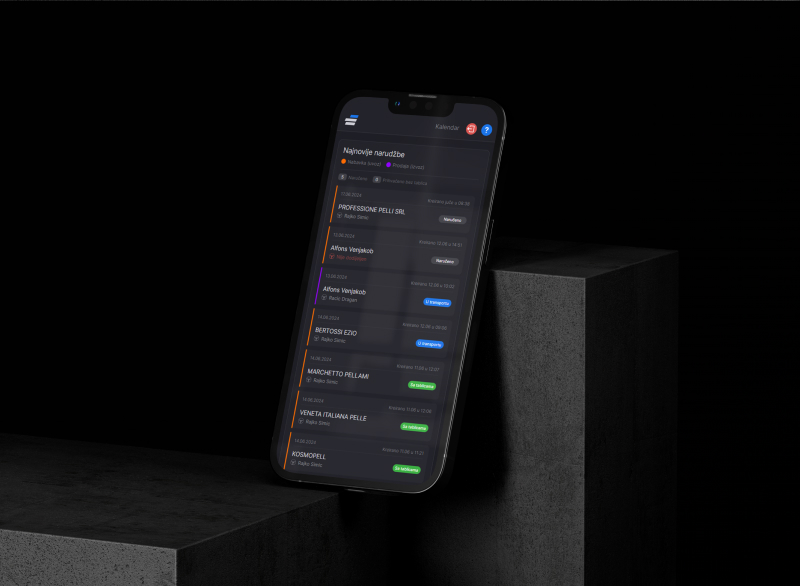How can we help you?
Rapid company growth, process optimization, data centralization, and management of customer relationships
The benefits of custom web applications for businesses are vast and significant. These solutions are designed to meet the specific needs of your organization, offering tailor-made features that align perfectly with your business objectives. By integrating custom web services, your business can grow seamlessly, avoiding the need for costly program upgrades or license purchases.
Custom web applications provide flexibility, allowing your business to scale features up or down as needed. They ensure that your systems can handle varying levels of demand while optimizing efficiency and ROI. This approach enhances business processes and integrates workflows, leading to improved performance and long-term success.
Benefits of advanced web systems for your business
Our web applications provide seamless functionality and ease of use, allowing you to efficiently manage tasks and boost productivity. Enjoy a modern design that adapts to your needs and enhances your business processes.
Unparalleled Accessibility
Web applications can be accessed from any device with an internet connection, including desktops, laptops, tablets, and smartphones.
Real-time Data Processing
Changes made by one user are instantly reflected across all devices and sessions.
Reporting system
Reports can be tailored to the user's needs and often include visualizations like charts and tables to analyze information and make informed decisions.
User-Friendly
Offering a simple, pleasant experience through intuitive interfaces, clear navigation, and customizable features. Responsive design ensures flawless performance across devices, contributing to quick learning and efficient task completion, making the application easy to use.
Automate to Save: Cut Administrative Costs
Even the most efficient administrator will be more costly than an automated process, and when building a bespoke web system, one of the primary goals is often to significantly minimize administrative time by automating various processes.
Integration with ERP systems / databases
Through this integration, web applications can automatically access and update data in ERP systems, such as inventory, order and invoice data, which enables better resource management and more efficient business processes.
The Web System Development Process
Discover what working with us looks like from start to finish: From initial analysis to final implementation and ongoing support
Phase 1: Discovery, Planning & Design Phase
Planning and Strategy: Laying the Foundation for Success
In this phase, we start by gathering and analyzing project requirements to understand objectives and business needs. We then create a detailed project plan covering scope, timeline, budget, and resources, while selecting the right technology stack. Finally, we design intuitive user interfaces and experiences, along with database schemas and system diagrams, setting a solid foundation for development.
Requirements Analysis
Our team identifies the project's objectives, target audience, and business needs. We work closely with stakeholders to gather comprehensive project requirements and expectations. We specify both functional and non-functional requirements.
Planning
Develop a project plan detailing the scope, timeline, budget, resources, and key milestones. Select the appropriate technology stack, frameworks, and tools. Outline the application's architecture, including data models, components, and their interactions.
Interface design
Craft the user interface (UI) and user experience (UX) for the web application. Create wireframes, prototypes, and mockups to illustrate the design and interactions. Design the database schemas, data flows, and system diagrams.
Phase 2: End-to-End Development
Comprehensive Development: Front-End, Back-End, and Database
In this phase, we address every aspect of web application development to ensure a fully functional product.
Front-End Development
Build the client-side of the web application using HTML, CSS, and JavaScript. Implement the UI design with responsive layouts and interactive features. Integrate necessary front-end frameworks and libraries.
Back-End Development
Develop server-side logic, business logic, and APIs using the chosen programming language and framework (e.g., Python with Django or Flask, Node.js with Express, Ruby on Rails, etc.). Implement authentication, authorization, and security protocols. Create RESTful or GraphQL APIs for front-end and back-end communication.
Database Development
Design and set up the database schema according to the application’s data needs. Select a suitable database management system (e.g., MySQL, PostgreSQL, MongoDB) and configure the database. Implement operations for data storage, retrieval, and manipulation.
Phase 3: Integration, Testing, and Deployment
Seamless Integration, Rigorous Testing, and Smooth Deployment
In this phase, we enhance the application by integrating external services, APIs, and libraries to expand its functionality. Comprehensive testing is conducted to ensure the application performs well across various devices and browsers, addressing any bugs or issues. Finally, we deploy the application to a production environment, configuring server settings and security measures while implementing monitoring tools to maintain stability.
Integration
Integrate external services, APIs, and libraries to enhance the application’s capabilities (e.g., payment gateways, social media, geolocation services).
Testing
Perform various testing phases, including unit testing, integration testing, and user acceptance testing. Assess the application’s functionality, performance, security, and compatibility across different browsers and devices. Address any identified bugs, errors, and inconsistencies.
Deployment
Launch the web application on a production environment, such as a web server, cloud platform, or hosting service. Configure server settings, domain names, and security measures (e.g., SSL/TLS certificates). Implement monitoring and error tracking tools to ensure application stability.
Phase 4: Maintenance, Documentation, and Training
Ongoing Maintenance, Documentation, and Training
In this phase, we continuously monitor the application’s performance, security, and user feedback to ensure it remains effective and secure. Regular updates are performed to fix bugs, apply security patches, and enhance features, while scaling the application to accommodate increased user demand and traffic.
Maintenance and Updates
Monitor the application’s performance, security, and user feedback on an ongoing basis. Regularly update and maintain the application, including fixing bugs, applying security patches, and enhancing features.
Documentation
Develop user documentation, including guides and tutorials, to assist users in navigating and utilizing the application effectively.
Training
Offer training and support to users, administrators, and other stakeholders as necessary.
Maximize business efficiency – Optimize your digital solution
Now that you’ve explored our process, if you’re interested in discussing how we can enhance your company’s web system, get in touch by clicking the link below.


